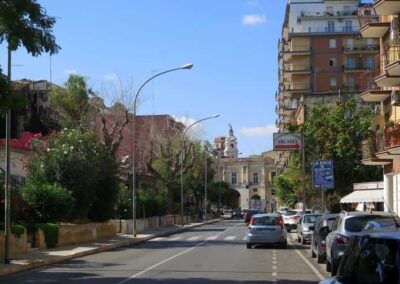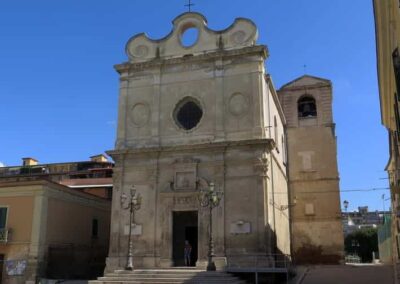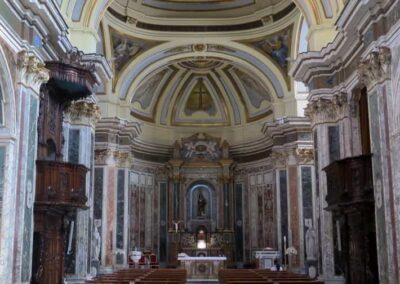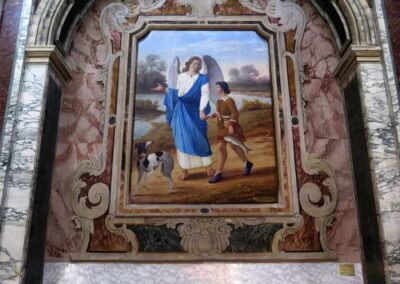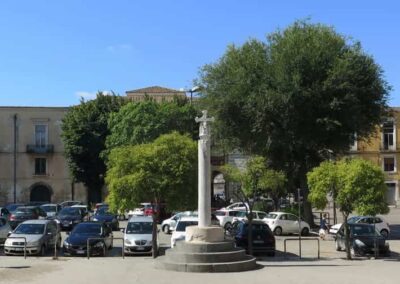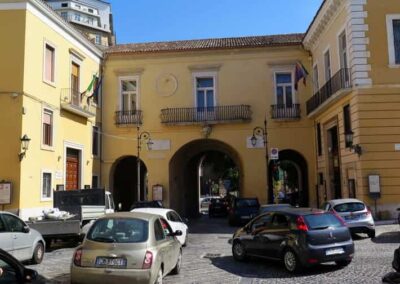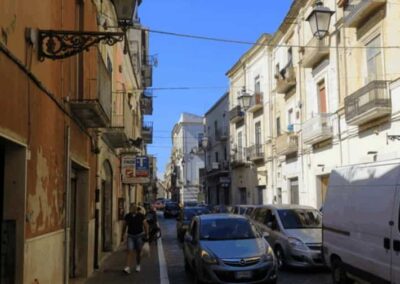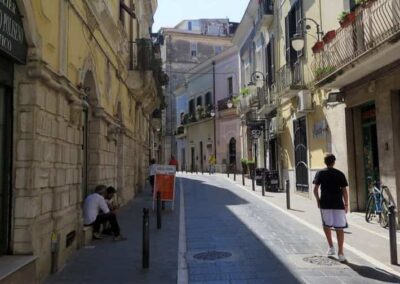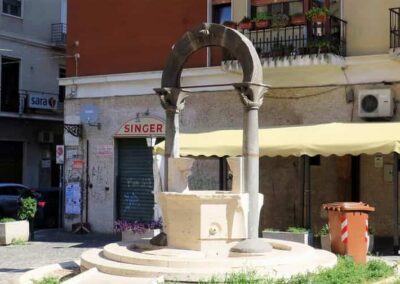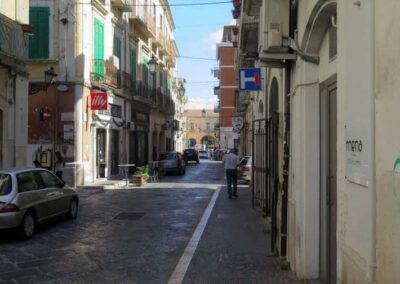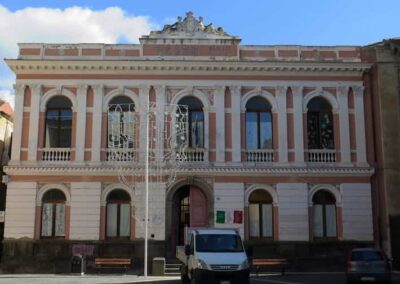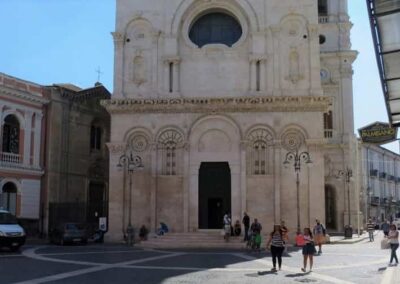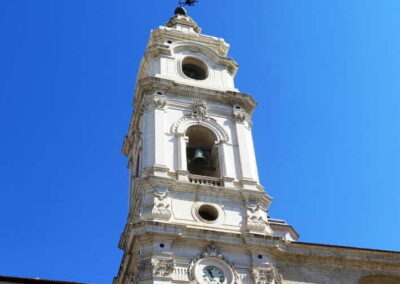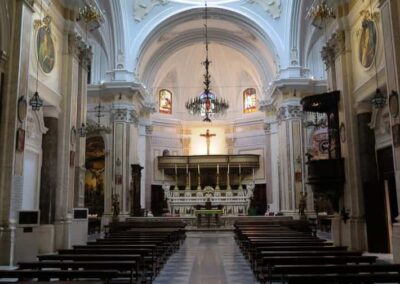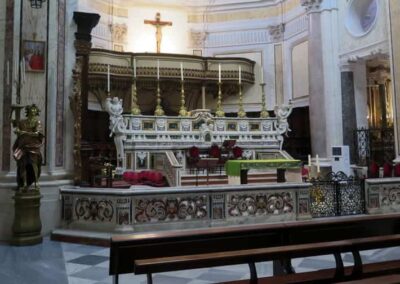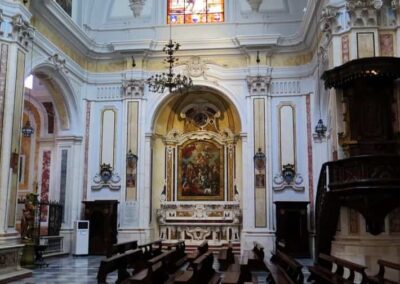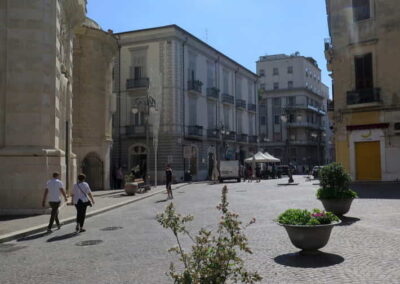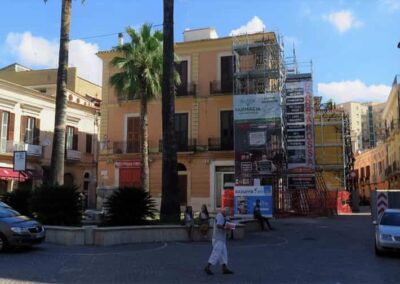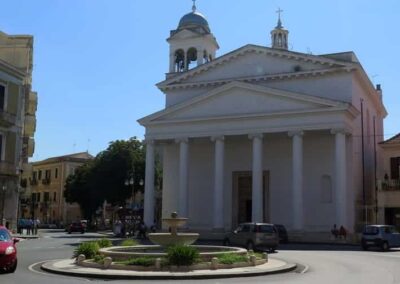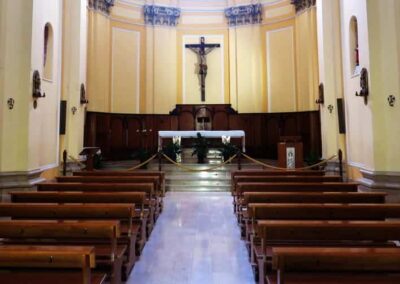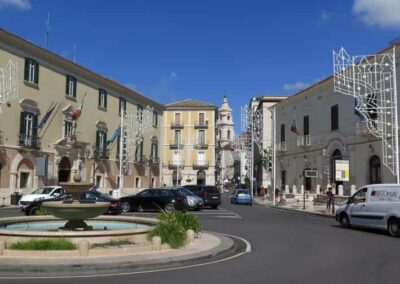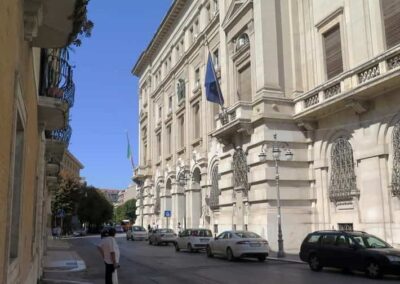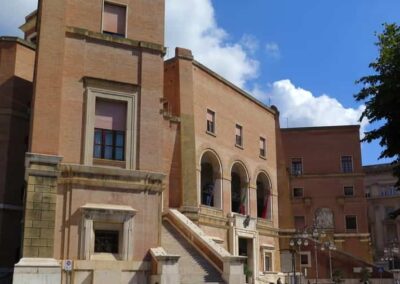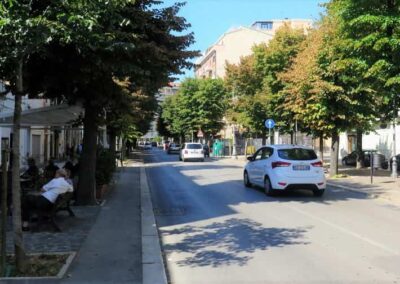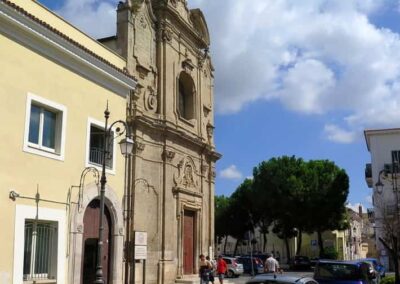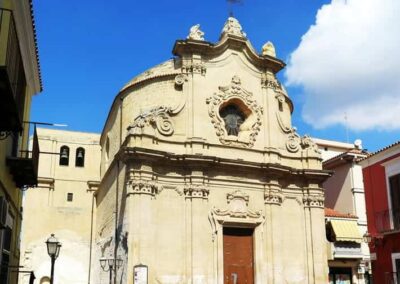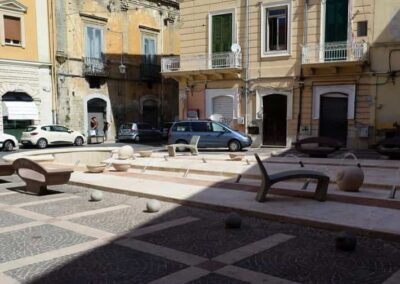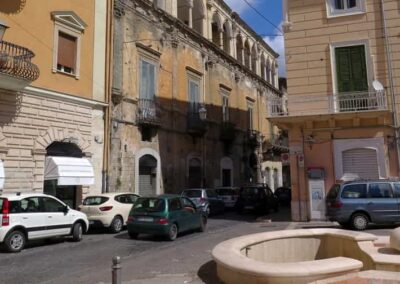HOME
THE REGIONS OF ITALY
PLACES IN ITALY
Italy in Photos
Via S. Lazzaro, 71100 Foggia, Italy (September 2018)
Foggia
Foggia, a city in the Puglia region of southern Italy, is a place where history, agriculture, and modern life intersect. Often considered the gateway to the region of Capitanata, it sits in the fertile plains of the Tavoliere delle Puglie, Italy’s second-largest plain. Known primarily for its agricultural output, Foggia has deep roots in the cultivation of wheat, tomatoes, and olives, earning it the nickname “Granary of Italy.” However, this provincial capital offers more than just fertile soil, boasting a rich history, cultural landmarks, and a lively, authentic southern Italian atmosphere. Foggia’s history dates to ancient times, with evidence of Neolithic settlements in the surrounding area. However, the city as it stands today has its origins in the Middle Ages. It flourished under the Normans, and later during the reign of Emperor Frederick II in the 13th century, who developed it into a major administrative and cultural hub. The remnants of this past can still be seen in the town’s architecture, despite much of the city being heavily damaged during World War II. One of the most iconic landmarks is the Cattedrale di Foggia, also known as the Cathedral of Santa Maria de Fovea. Built in the Romanesque style in the 12th century, the cathedral was later restored with Baroque elements. Its name, “Fovea,” refers to the medieval Latin word for “pit,” recalling the ancient cisterns that were once found in the area. Another important historical site is the Palazzo Dogana, which served as a centre for the administration of the sheep routes during the Aragonese period. This building has been recognized by UNESCO for its cultural significance. Foggia’s streets are lined with historical buildings, charming piazzas, and hidden treasures like the ruins of Frederick II’s imperial palace, giving the city an air of timelessness. Visitors can also explore Piazza Cavour, a central square adorned with a statue of the famous Italian statesman, which serves as a popular meeting point for locals.
While Foggia has modernized over the decades, it remains an agricultural powerhouse. The fertile land surrounding the city has long been a centre for wheat production, a tradition dating back to Roman times. Today, the region is known for producing not only grain but also high-quality olive oil and some of Italy’s best tomatoes. Agriculture is deeply woven into the fabric of local life, shaping the economy, culture, and cuisine of Foggia and its surrounding areas. The city hosts vibrant markets where local produce takes centre stage, and visitors can sample fresh, seasonal ingredients that form the basis of Puglian cuisine. From traditional dishes like *orecchiette* pasta to taralli, (a type of savoury biscuit), Foggia’s food is simple but rich in flavour, reflecting its agrarian roots. Foggia also boasts a strong sense of cultural identity and pride. Throughout the year, the city celebrates various religious and folk festivals that highlight local traditions and community spirit. One of the most notable is the Feast of the Patron Saints, St. Guglielmo and St. Pellegrino, which brings the streets to life with processions, music, and food stalls. While often overlooked by tourists heading to Puglia’s coastal areas, Foggia offers a more authentic, off-the-beaten-path Italian experience. Its lively piazzas, historical buildings, and strong agricultural heritage make it a unique and intriguing destination. The combination of its past and present, ranging from its medieval cathedrals to bustling markets which showcases the resilience and adaptability of this southern Italian city. Foggia’s location makes it an excellent starting point for exploring the nearby Gargano Peninsula, with its stunning coastline, national parks, and religious pilgrimage sites like San Giovanni Rotondo, home to the sanctuary of Padre Pio. From its agricultural plains to its cultural richness, Foggia stands as a dynamic part of southern Italy that is well worth discovering.
Worth a Visit
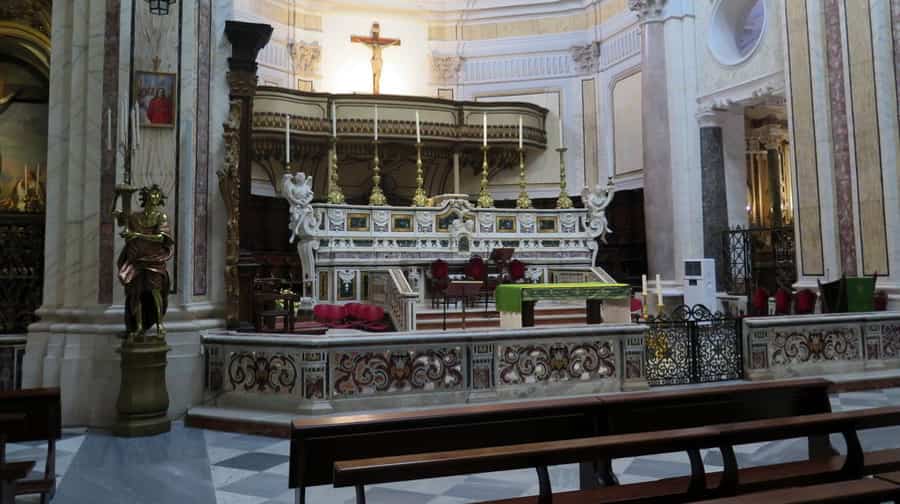
Nestled in the heart of Foggia, Apulia, the Basilica Cattedrale di Foggia, officially dedicated to the Assumption of the Virgin Mary (Italian: Beata Maria Vergine Assunta in Cielo), stands as a monument of architectural splendour and profound spiritual significance. Originally commissioned in the late 12th century (around 1170–1179) under the auspices of King William II of Sicily, the structure began its life as a collegiate church, embracing the Romanesque style infused with elegant Pisan-inspired details. One of the cathedral’s most cherished features is its rich exterior façade, marked by five blind arches and crowned with a meticulously sculpted cornice showcasing animals, mythical figures, and classical motifs, likely the work of the architect-sculptor Bartolomeo da Foggia.
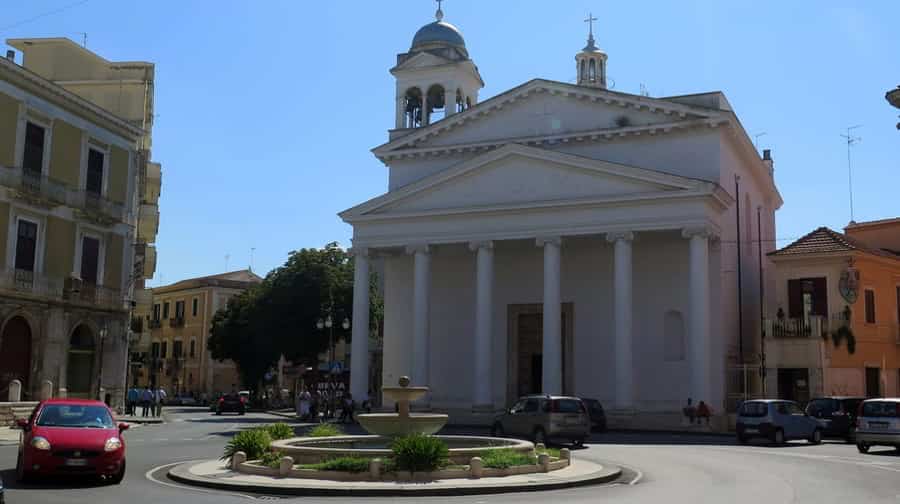
Located at the threshold of Foggia’s ancient core, Piazza XX Settembre emerged in the mid-18th century as one of the city’s first expansive public spaces beyond its medieval walls. Originally known as Largo Palazzo, the square took shape around 1762, coinciding with the completion of the majestic Palazzo Dogana, whose imposing structure continues to dominate the western flank of the piazza. Over time, the square underwent a series of renaming’s. In the wake of Italy’s unification, it became known as Piazza Prefettura, reflecting its administrative prominence. Finally, in 1895, the name Piazza XX Settembre was bestowed, or affirmed, via a commemorative plaque fixed on the Dogana’s façade, honouring the Risorgimento’s symbolic events.
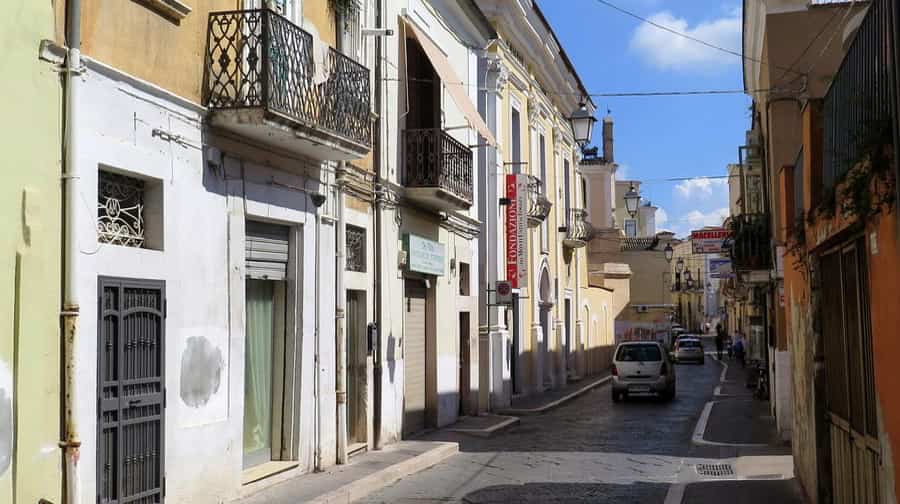
Nestled at the heart of Foggia’s historic core, Via Arpi weaves a narrative across millennia, embodying the city’s origins, medieval prominence, and evolving identity. Its name pays homage to the ancient city of Arpi, founded by the Homeric hero Diomedes and once a steadfast ally of Rome during the Second Punic War. The street begins at Porta Arpana, also known as the “Three Arches”, the age-old gateway to Frederick II’s city. These arches, survivors of centuries of transformation and wartime destruction, remain one of Foggia’s few tangible links to its medieval walls. Historically, Via Arpi was known as the Strada delli Mercanti, Merchant’s Street, bustling with shops and storied commercial activity. A recent exhibit and companion booklet reanimated this legacy, exploring the street’s vibrant past through archival contracts and artistic representations, preserving its commercial-and-cultural heritage.
Photo Gallery of Walk – Via S. Lazzaro to Via Arpi
Approximately 1.86 km – 1.16 miles
The walk starts in Via S. Lazzaro – Church of San Giovanni Battista, Piazza Piano della Croce – Via Arpi – Corso Vittorio Emanuele II – Via Arpi – Piazza Francesco de Sanctis – Basilica Cattedrale di Foggia – B.V.M. Assunta in Cielo – Piazza Pericle Felici – Via Duomo – Piazza del Lago – Via Duomo – Chiesa di San Francesco Saverio o Chiesa delle Colonne, Piazza XX Settembre – Piazza XX Settembre – Prefettura di Foggia, Corso Giuseppe Garibaldi – Via Pasquale Fuiani – Via Arpi – Chiesa di San Giovanni di Dio, Via Arpi – Via Arpi – Piazza Baldassarre – Via Arpi.
COPYRIGHT © 2018-2025 ITALY IN PHOTOS - ALL RIGHTS RESERVED
